1. Canned Deviled Ham
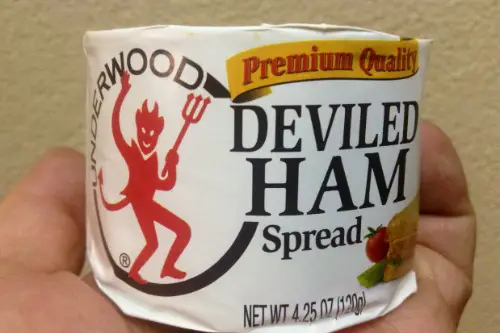
Deviled ham, that mystery meat mash-up in a little paper-wrapped tin, was once a lunchbox staple and a go-to for quick sandwiches. Packed with pork, spices, and preservatives, it was beloved for its long shelf life. But flip that can over and you’ll see a laundry list of sodium, nitrates, and mystery additives. These days, health inspectors raise an eyebrow at how far it stretches from anything resembling actual ham.
It also doesn’t help that deviled ham was often stored unrefrigerated and slathered on white bread, creating a double whammy of processed overload. In a world now obsessed with whole foods and clean labels, this retro spread is seen as a red-flag food. It’s still around, but relegated mostly to survival kits and nostalgic road trips. Safe to say, it’s no longer a pantry must-have.
2. Oleo (Margarine with Trans Fats)
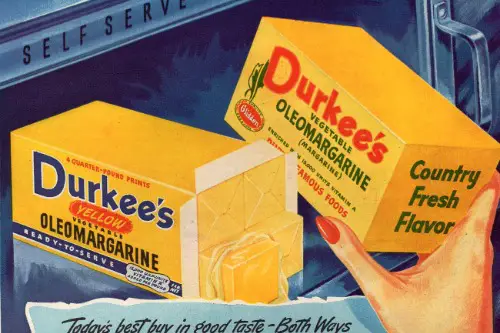
Remember when butter was the villain and margarine was the hero? Turns out, the early versions of margarine—also known as oleo—were loaded with trans fats that are now widely recognized as heart health hazards. These partially hydrogenated oils were celebrated for their spreadability and shelf life but have since been banned in the U.S. as of 2018. Back then, though, every fridge had a tub.
Today, a health inspector would take one look at those old-school margarine tubs and cringe. Trans fats raise bad cholesterol, lower the good kind, and increase the risk of heart disease. We’ve come full circle—now butter, in moderation, is seen as the more natural choice. Funny how the tables turn.
3. Canned Fruit Cocktail in Heavy Syrup
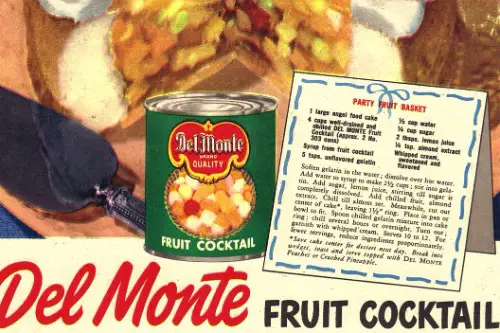
This sugary rainbow of mushy pears, grapes, and mystery cherries used to sit proudly in pantries across America. While it was pitched as a “serving of fruit,” it was more like a dessert disguised as something nutritious. Heavy syrup is basically code for “drenched in sugar water,” often containing more grams of sugar than a candy bar. For decades, this was a default side dish at dinners, picnics, and cafeterias.
But modern nutrition standards have shifted dramatically. Health inspectors today would point out that this is less about fruit and more about excessive added sugars. Fresh fruit or fruit in its own juice is now the recommended route. That gloppy, syrupy mess? A dietitian’s nightmare.
4. Tang Powdered Drink Mix
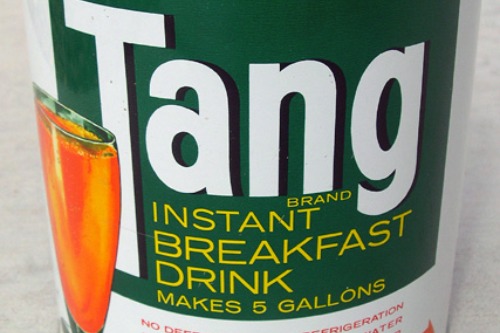
Astronauts loved it, kids begged for it, and pantries weren’t complete without it. Tang, that neon-orange powder you mixed with water, was marketed as a vitamin C-rich beverage—practically health food by 1960s standards. But beneath that citrusy zing were artificial colors, flavors, and a truckload of sugar. Essentially, it was Kool-Aid with better PR.
In today’s wellness-focused world, Tang wouldn’t make it past the front door of most schools, let alone a health-conscious pantry. Its sugar content and artificial additives are red flags now. Plus, parents today lean toward actual juice or—gasp—just water. Tang still exists, but it’s a relic of an era when “fortified” meant “fine.”
5. Shelf-Stable Lard Tubs
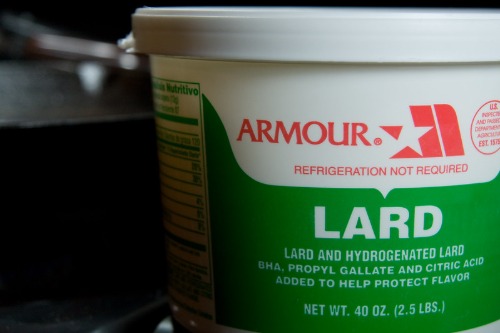
Lard used to be everywhere—on pie crusts, in fryers, and even smeared on toast in some households. Stored at room temperature in big white tubs, it was valued for its richness and versatility. But then came the fat-phobic era, and lard was all but exiled thanks to its high saturated fat content and links to heart disease. Add in the fact that some lard was hydrogenated for shelf stability, and you’ve got another trans fat offender.
Today’s health guidelines strongly advise cutting back on saturated fats, especially from animal sources. Health inspectors looking at old-school lard usage would likely flag improper storage and outdated nutrition assumptions. We now have alternatives like avocado oil or even butter, depending on the context. Lard is still used in some culinary circles, but it’s definitely no longer a household staple.
6. Vienna Sausages
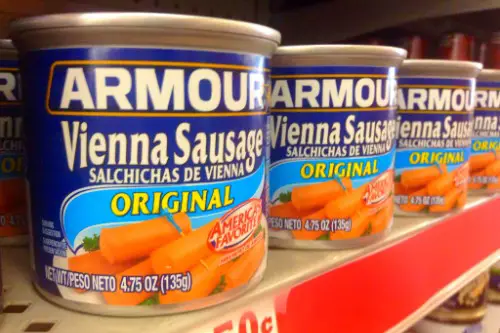
Tiny, squishy, and floating in a can of gelatinous broth, Vienna sausages were a pantry fixture for decades. Marketed as a protein-packed snack, these bite-sized meat logs were cheap, convenient, and strangely beloved. But they’re ultra-processed, high in sodium, and contain nitrates that are linked to cancer risks. Not exactly the health food of champions.
Inspectors today would zero in on storage practices and the heavy preservatives used to keep them shelf-stable. They were often eaten cold straight from the can, raising concerns about hygiene and food safety. While you can still find them on grocery shelves, they’ve fallen out of everyday favor. More people now reach for fresher sources of protein with fewer ingredients and better nutritional profiles.
7. Powdered Coffee Creamer
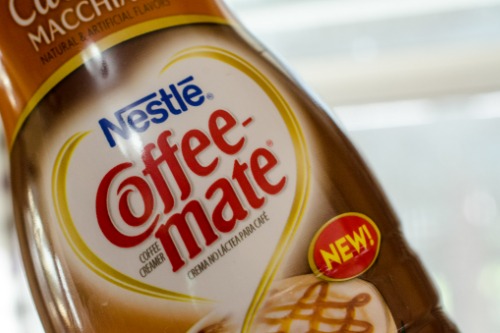
Powdered creamer made your morning cup easy—no refrigeration needed and plenty of flavor. But that creamy swirl came at a cost: hydrogenated oils, corn syrup solids, and artificial flavorings. It’s not dairy, despite its name, and it’s not even close to being clean or wholesome. For decades, it was the workplace breakroom MVP.
Today’s consumers are more aware of what they’re putting in their coffee. Plant-based creamers and real half-and-half have taken center stage, leaving powdered creamers looking pretty sketchy. A health inspector might question its long shelf life and chemical makeup. If your creamer doesn’t need a fridge, it might be worth asking why.
8. Tinned Bacon
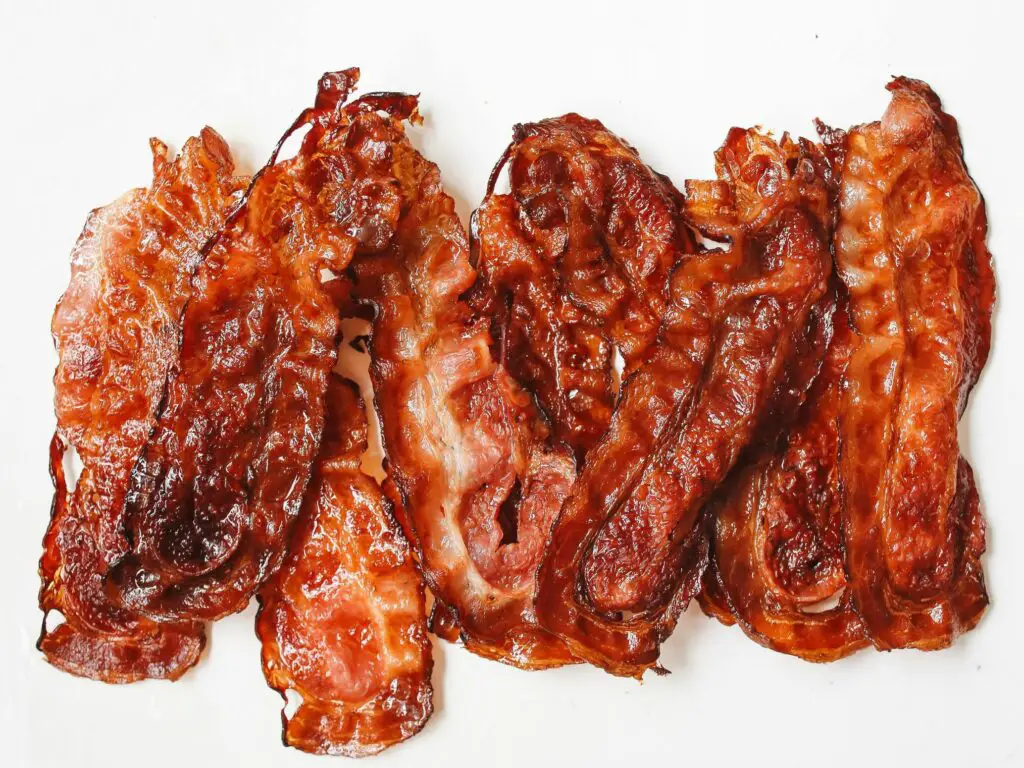
Yes, canned bacon was once a real thing—and people bought it. It came pre-cooked and rolled up like a meat scroll, preserved with heaps of salt and nitrates. During wartime and in emergency kits, this was prized for its convenience and longevity. But the reality is, this product was more about shelf life than flavor or health.
These days, bacon is controversial enough fresh—cured meats are known carcinogens per the World Health Organization. A canned version just takes the risks and dials them up. With questionable storage conditions and extreme sodium content, it’s a hard pass for most modern consumers. It’s one of those foods that sounds cool until you actually open the can.
9. Aspic (Savory Gelatin Meals)
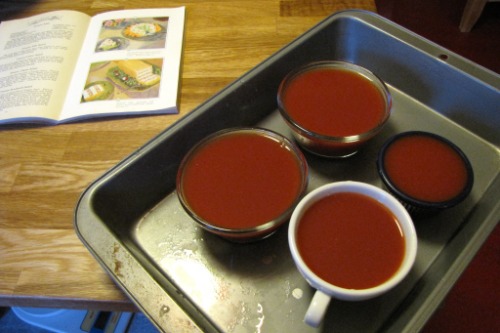
You’d be hard-pressed to find a millennial or Gen Z-er who’s even heard of aspic. This savory gelatin dish—made from meat stock and used to encase cold cuts or vegetables—was once the height of culinary sophistication. But it relied on gelatin and long storage times without refrigeration, raising major questions about modern food safety. Plus, it just doesn’t look appetizing to most of today’s eaters.
Back then, aspic was considered both decorative and practical. Now, it’s a red flag for bacterial growth and questionable meat handling. Health inspectors might question its temperature control and storage method before even asking about ingredients. Safe to say, this is one retro trend that’s not making a comeback.
10. Condensed Milk as a Beverage Additive
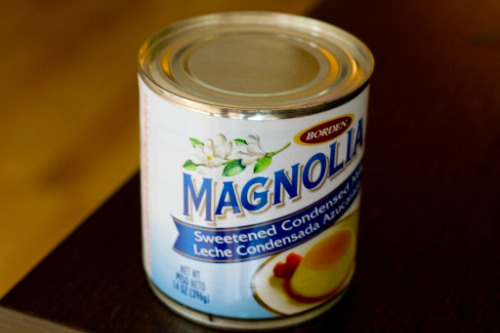
Sweetened condensed milk wasn’t just for baking—many Americans used to stir it into coffee or even pour it over fruit for dessert. It was beloved for its richness and sweetness, but nutritionally it’s essentially thickened sugar milk. With a whopping dose of sugar in every spoonful, it’s no surprise this pantry item is no longer casually sipped or slathered. Back in the day, no one thought twice about it.
Now we’re far more aware of the link between added sugars and chronic diseases like diabetes and heart conditions. Health inspectors and dietitians alike would flag its overuse, especially in places like diners and home kitchens. It still has a place in recipes, but it’s treated more like an indulgence than an everyday ingredient. Less “coffee creamer,” more “decadent drizzle.”
This post 10 Products That Used to Be in Every American Pantry—Now They’d Raise a Health Inspector’s Eyebrows was first published on American Charm.


